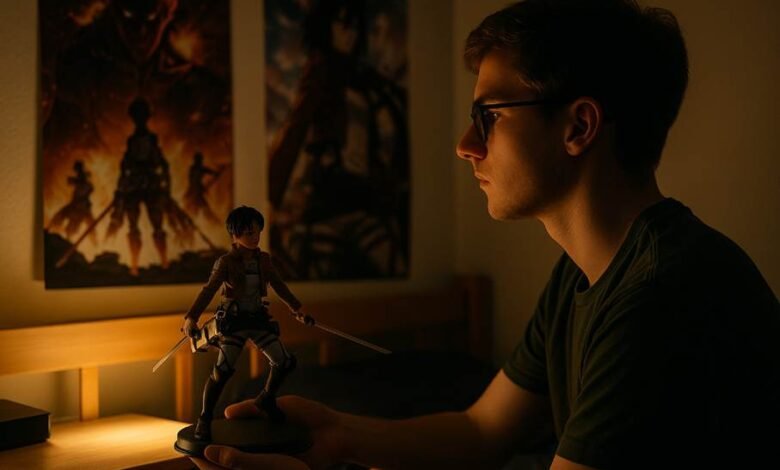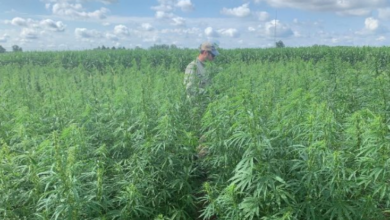Is Attack on Titan a violent manga?

Attack on Titan often sits at the top of lists for the most brutal or graphic manga of the modern era. But does it truly deserve its reputation for violence, or is there something deeper behind the blood and chaos? If you’ve been wondering whether this anime and manga are genuinely disturbing or just visually intense, this article breaks down what you need to know. From shocking scenes to psychological impact and narrative necessity, here’s what really defines the violence of Attack on Titan.
Visceral impact from the very first chapter
When you open the first few pages of Attack on Titan, one thing becomes immediately clear: this is not a world for the faint of heart. Giant humanoid creatures, called Titans, crash through walls and devour people alive, often without warning. These scenes are not just suggested; they’re shown in full, visceral detail. From a narrative standpoint, this serves a critical function. The manga’s creator, Hajime Isayama, throws the reader into a desperate world where humanity teeters on the edge of extinction. The violence is not stylised or glorified it’s ugly, chaotic, and intentionally jarring. It’s this visual language that sets the tone of the entire series and underscores the themes of survival, fear, and sacrifice.
One reason the manga has remained so popular among collectors is this intensity. The most iconic moments are often captured in Attack on Titan figures, many of which recreate the high-tension scenes from the story. These collectibles are more than just merchandise they’re physical representations of key emotional and visual moments. Whether it’s Eren transforming mid-battle or Levi launching into a deadly spin attack, these figures preserve the raw energy of the source material. For collectors looking for realistic Attack on Titan action figures, this brutal accuracy is part of the appeal. The violence is not just entertainment it’s a language that defines the world.
See also: Building a Healthier and Happier Lifestyle for Your Family
Brutality with purpose, not shock for shock’s sake
While many manga titles include action or blood, Attack on Titan distinguishes itself by making violence a tool for storytelling rather than spectacle. Every death, every explosion of gore, serves a narrative purpose. Whether it’s illustrating the cost of war, the loss of innocence, or the collapse of trust, violence in this world is a vehicle for meaning. The world Isayama created mirrors real-life historical tensions invasion, oppression, genocide. The result is a story where no one is safe, and every decision carries weight. Even the main characters are not shielded from death or moral compromise. Readers are forced to grapple with uncomfortable truths, including betrayal, political manipulation, and what it means to be human in the face of horror.
That psychological weight resonates deeply with fans. For those who purchase collectibles from sites like anime figures, the emotional connection to these characters is more than surface-level. A figure of Mikasa holding her blades doesn’t just represent action it recalls moments of loss, determination, and survival. This connection explains why there’s a growing demand for high-quality limited edition Attack on Titan statues that go beyond just aesthetic. Fans seek authenticity not just in design, but in emotional context. These aren’t toys; they’re tributes to a story that dared to show humanity at its most vulnerable.
What kinds of violence appear in Attack on Titan?
The manga presents several types of violence that serve different purposes within the story:
Physical violence
The most obvious and immediate. Limbs are torn, necks snapped, cities destroyed. These events are drawn in painful detail. It’s rare to find a volume without at least one shocking moment of carnage. But unlike action-packed shonen titles, these fights are not fun or energising they’re usually quick, one-sided, and devastating.
Psychological trauma
Arguably more impactful than the blood is the emotional weight. Characters frequently lose loved ones, are betrayed by mentors, or are confronted with moral dilemmas. The fear and paranoia are palpable, and this slow-burn tension is what keeps many fans glued to the story.
Is it appropriate for all audiences?
Absolutely not. While Attack on Titan is often grouped with other mainstream anime, its content is significantly more mature. It is best suited for late teens and adults. The violence is graphic, and the themes including war crimes, genocide, and child soldiers are far too complex and disturbing for younger audiences. That said, it’s also a deeply philosophical work. The manga asks hard questions about loyalty, morality, and power. If you’re ready to engage with these themes, the experience can be immensely rewarding. But make no mistake this is not a casual read. It’s a psychological and emotional commitment.
Why are fans drawn to this kind of intensity?
The violence in Attack on Titan is not just tolerated by fans it’s part of the appeal. But why? :
- story realism and narrative weight
- character development through trauma
- emotional engagement
- mature, thought-provoking themes
- striking, cinematic visuals
Many readers find that the intensity makes the moments of hope, friendship and resistance all the more powerful. It’s a world of extremes which is exactly what keeps people invested.
A harsh story with a glimmer of light
While Attack on Titan can be exhausting in its brutality, it’s not a story without light. In the darkest moments, characters find courage, love and clarity. Even in a world built on fear, moments of humanity still break through. It’s in this contrast that the manga finds its emotional power. Yes, the violence is shocking. But it’s not violence for its own sake it’s there to make you feel, think and remember.
What the violence of Attack on Titan really teaches us
Calling Attack on Titan “violent” barely scratches the surface. It’s a challenging, sometimes brutal story but one that’s carefully written and emotionally rich. The violence is there not to disturb, but to expose what people are capable of when the world falls apart. And if you’re willing to go along for the ride, you might find that it says something surprisingly hopeful about strength, choice, and the resilience of the human spirit.



